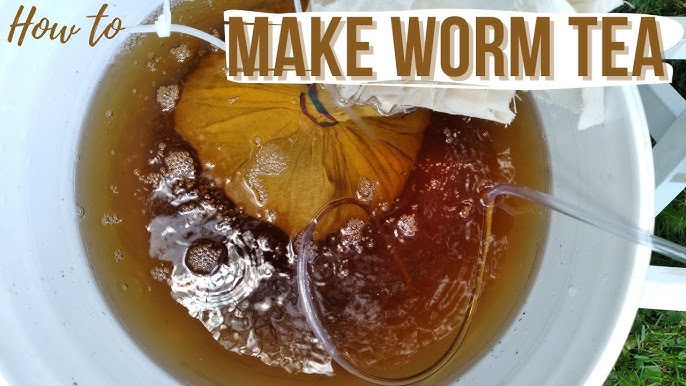A Natural Powerhouse Hiding in Plain Sight
If you’ve ever wondered why your neighbour’s tomatoes thrive or why that fiddle-leaf fig down the street never seems to struggle, it might come down to one secret: worm castings.
This isn’t just organic matter. It’s a living ecosystem in every handful. Whether you’re new to gardening or a seasoned grower looking for sustainable results, learning how to use worm castings effectively will transform the way you grow.
Worm castings (also called vermicast) are essentially worm manure but they’re far from simple waste. They’re a nutrient-dense, microbe-rich substance created as worms digest organic matter. Unlike compost or synthetic fertilizer, worm castings don’t just feed plants, they unlock soil life.
Let’s break down how you can use worm castings from the basics all the way to advanced techniques and why gardeners across Canada are switching to this natural solution for every part of their growing journey.

If you’ve ever wondered why your neighbour’s tomatoes thrive or why that fiddle-leaf fig down the street never seems to struggle, it might come down to one secret: worm castings.
The Basics: How to Use Worm Castings for Common Plants
1. For Vegetable Gardens (Raised Beds, Containers, or In-Ground)
Worm castings provide balanced nutrition to vegetables without the risk of burning roots. They support root development, boost resilience, and improve yields—even in the short Canadian growing season.
How to apply:
-
Before planting: Mix 10–20% worm castings into your soil or raised bed. For a standard 10-gallon container, that’s about 1–2 gallons of castings mixed into your soil.
-
Side-dressing: Once plants are established, add a small handful (¼–½ cup) around the base every 3–4 weeks during the growing season.
-
Worm tea: Water vegetables every 1–2 weeks with freshly brewed worm tea to boost microbial activity and support fruiting.
Best crops for worm castings: Tomatoes, leafy greens, peppers, cucumbers, carrots, beans, and herbs like basil and parsley thrive with regular applications.

Best crops for worm castings: Tomatoes, leafy greens, peppers, cucumbers, carrots, beans, and herbs like basil and parsley thrive with regular applications.
2. For Houseplants (Including Tropicals and Succulents)
Indoor plants often struggle with poor drainage, salt buildup, and pest issues. Worm castings help balance pH, reduce fungal problems, and provide a slow, safe release of nutrients.
How to apply:
-
Top-dress: Add 1–2 tablespoons on top of the soil once a month for small to medium-sized pots. Water afterward to soak the nutrients into the root zone.
-
Repotting mix: Blend 10–15% worm castings into your potting mix. For tropicals, pair with coco coir, orchid bark, and perlite for better aeration.
-
Worm tea spray: Mist or soil drench your houseplants every 2–3 weeks. This is especially effective for plants like monstera, pothos, alocasia, and philodendron.
Note: For succulents and cacti, use a smaller amount—5–10% castings with a very well-draining base like sand, pumice, or perlite.

Worm castings help balance pH, reduce fungal problems, and provide a slow, safe release of nutrients.
Beyond the Basics: Flower Beds, Lawns, and Trees
3. Ornamental Flowers and Shrubs
Worm castings are a gentle way to enhance ornamental gardens, extending flowering time and reducing fungal infections in the root zone.
How to apply:
-
At planting: Blend 10% worm castings into the hole or bed when installing new flowers or shrubs.
-
Seasonal boost: Add a top-dressing of castings around the drip line once per season. For extra flower power, water with worm tea during the bloom phase.
-
Best choices: Roses, hydrangeas, dahlias, coneflowers, and native perennials all benefit from regular casting applications.
4. Lawns and Turf
If you want greener grass without synthetic fertilizers, worm castings offer a safer, longer-lasting solution. Plus, they support soil organisms that naturally reduce thatch and improve root depth.
How to apply:
-
In early spring, spread a thin layer (¼ inch) of worm castings across your lawn. For best results, use a compost spreader or hand-sift the material evenly.
-
Water it in thoroughly. Repeat once in late summer if desired.
-
Optional: Spray worm tea monthly to enhance microbial activity and reduce fungal pressure.
Worm castings are ideal for pet-friendly yards and environmentally conscious households. There’s no chemical runoff, no burning, and no harm to beneficial insects.

Worm castings are ideal for pet-friendly yards and environmentally conscious households. There’s no chemical runoff, no burning, and no harm to beneficial insects.
Worm Tea: Liquid Microbial Gold
Worm tea is one of the easiest ways to stretch your worm casting supply while feeding plants with living microbes that support nutrient cycling and disease resistance.
How to Brew Worm Tea
You’ll need:
-
1 cup high-quality worm castings
-
1 gallon dechlorinated water (tap water left out for 24 hours works)
-
Optional: 1 tsp unsulfured molasses to feed microbes
-
Bucket and stirring stick or aquarium bubbler
Steps:
-
Add castings to the water.
-
Stir or aerate continuously for 12–24 hours.
-
Use immediately—ideally within 6–12 hours after brewing stops.
How to apply:
-
Soil drench: Pour at the base of plants every 1–2 weeks.
-
Foliar spray: Mist leaves to coat them with beneficial microbes (early morning or late evening only).
-
Seed soaking: Soak seeds for 6–12 hours before planting to encourage stronger germination.

Worm tea is one of the easiest ways to stretch your worm casting supply while feeding plants with living microbes that support nutrient cycling and disease resistance.
Seasonal Tips for Using Worm Castings in Canada
Spring:
Perfect time to amend new beds and potting mixes. Use worm castings during seed-starting, transplanting, and early growth phases.
Summer:
Use worm tea regularly to support flowering and fruiting. Top-dress fast-growing plants like tomatoes, squash, and cucumbers.
Fall:
Apply a thin layer of castings to garden beds before mulching. This helps plants store nutrients and improves microbial activity over winter.
Winter:
Indoor plants need nutrition too. Add a spoonful monthly or brew a diluted worm tea to keep microbe life alive in heated environments.
How Much Is Too Much? And Other Pro Tips
Because worm castings are so rich, more is not always better. Here’s how to avoid common mistakes and get the most out of every application.
Best Practices:
-
Stick to 10–20% in soil blends. Any more may cause compaction or retain too much moisture.
-
Water well after applying castings, especially as a top-dress, so nutrients seep into the root zone.
-
Store castings properly: keep them slightly moist, in breathable bags (like burlap or fabric), away from direct sunlight.
-
Avoid sealed plastic bags unless vented—they can go anaerobic and smell sour.
Pair with:
-
Charcoal or biochar: to improve porosity and microbial life.
-
Mycorrhizae fungi: to build symbiotic root networks.
-
Crushed eggshells: to add calcium for plants like tomatoes and hoyas.
Case Study: A Balcony Garden Success
Rachel, a home gardener in Toronto, shared this with us last fall:
“I was skeptical at first. But after one summer of using worm castings on my balcony tomatoes and basil, I’m converted. The basil was three times the size, smelled amazing, and no pests. I didn’t use any synthetic fertilizer. Just worm castings and worm tea.”
Worm castings are not a trend. They’re part of a return to natural, regenerative growing—and their success is being quietly proven across Canada, from urban balconies to full backyard homesteads.
Try It Today
At DH Garden Centre in Vancouver, we offer premium organic worm castings that are perfect for beginner gardeners, professionals, and everyone in between.
You can:
-
Visit us in-store to get personalized advice
-
Order online for fast delivery anywhere in Canada
-
Message us anytime with soil or plant questions—we’re here to help
👉 Order Worm Castings from DH Garden Centre
👉 [Have questions? Click here to message us.]
FAQs: Worm Casting Use
Q: Can I use worm castings with seedlings?
Yes, in small amounts. Mix 5–10% into seed-starting mixes for gentle, root-safe nutrition.
Q: Do worm castings smell?
No. They smell like fresh, rich forest soil. If they smell bad, they were likely stored incorrectly.
Q: Is worm tea the same as compost tea?
Not exactly. Worm tea is brewed from worm castings and tends to be more consistent and gentler. Compost tea varies depending on the compost used.
Q: Can I apply worm castings too often?
It’s unlikely you’ll damage plants, but excessive use can make soil heavy. Stick to the recommended ratios.
Q: How long do worm castings last in soil?
Nutrient release typically lasts 2–3 months, though improvements in soil structure and microbial activity last longer.
Q: Are worm castings safe for pets and kids?
Yes. They’re entirely non-toxic, unlike chemical fertilizers. That’s why they’re perfect for family gardens.
Q: Can I use worm castings in hydroponics?
No, but worm tea can sometimes be diluted and used to supplement microbial activity in certain systems.

